

EMI Cassette Tapes: XDR Series
#08. Sgt. Pepper's Lonely Hearts Club Band (TC-PCS 7027)
(Update: 26th September 2025)




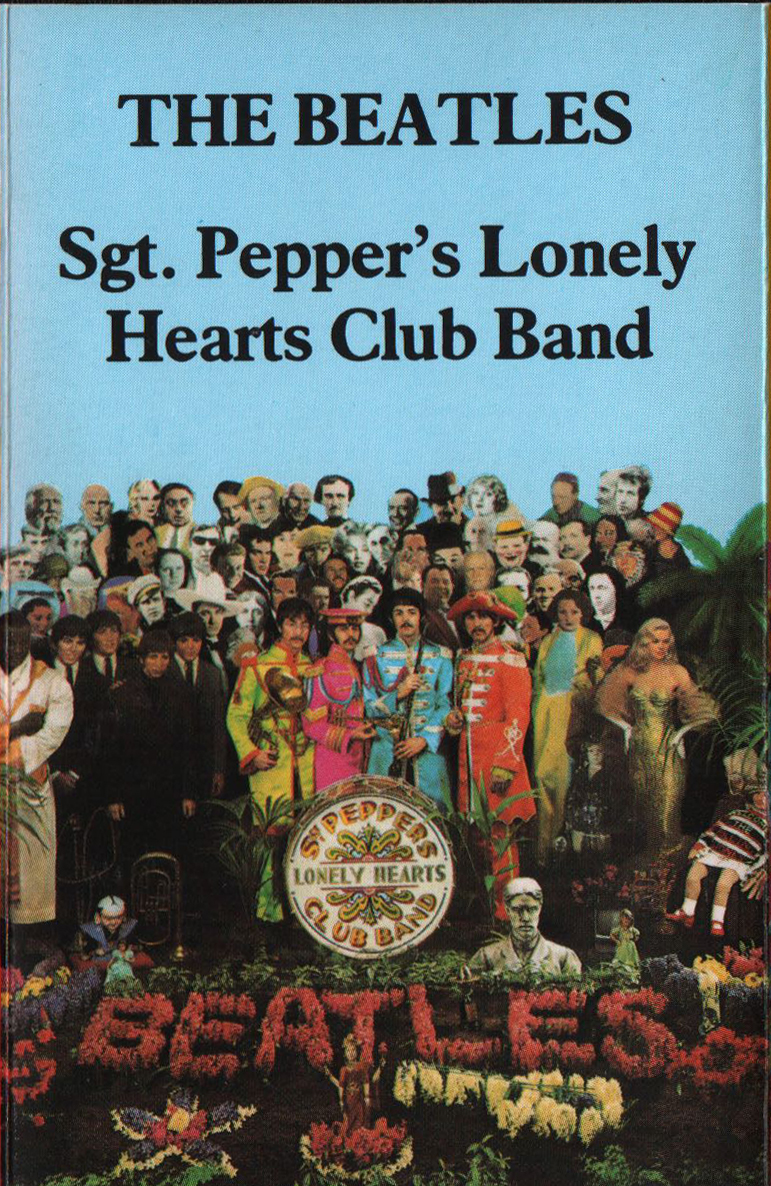 |
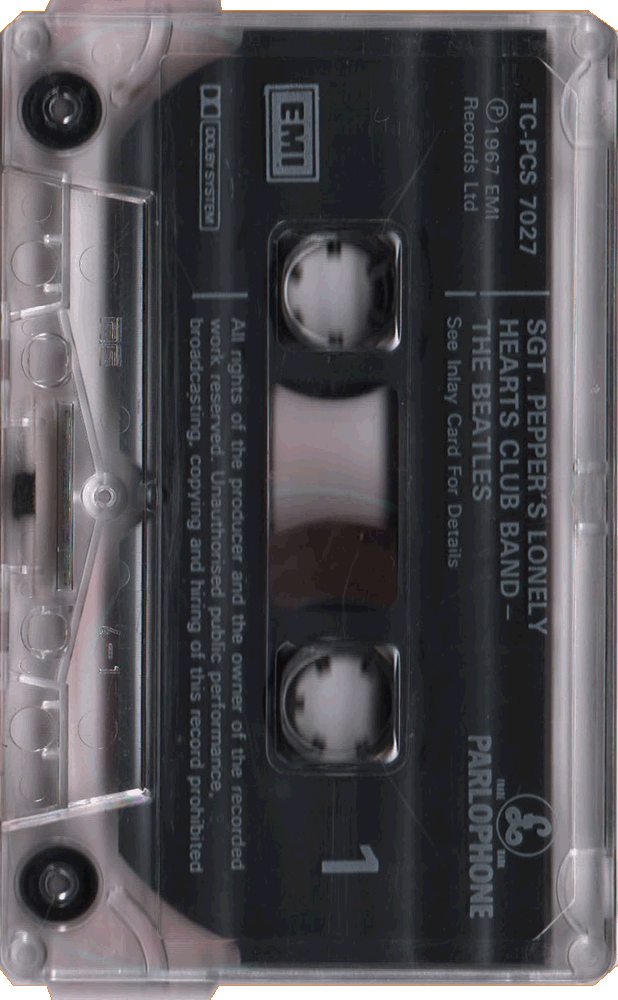 |
|
|
| Parlophone XDR
Inlay and Tape |
|||
|
TITLE
|
SGT. PEPPER'S
LONELY HEARTS CLUB BAND |
|||
| CATALOG NUMBER | TC-PCS 7027 |
|||
|
RELEASE DATE
|
1992? / (First Press: 1st June 1987) | |||
| TRACK LISTING | SIDE 1 | SIDE 2 | ||
| Sgt. Pepper's Lonely Hearts Club Band |
Within You Without You |
|||
| A Little Help From My Friends |
When I'm Sixty-Four |
|||
| Lucy In The Sky With Diamonds |
Lovely Rita |
|||
| Getting Better |
Good Morning, Good Morning |
|||
| Fixing A Hole |
Sgt. Pepper's Lonely Hearts Club Band
Reprise |
|||
| She's Leaving Home |
A Day In The Life | |||
| Being For The Benefit Of Mr. Kite! | (Sgt.Pepper Inner
Groove *at least 12 times / fade out) |
|||
| CASSETTE CASE AND TAPE |
CASE FRONT | CASE BACK | SIDE 1 --> Click! | SIDE 2 --> Click! |
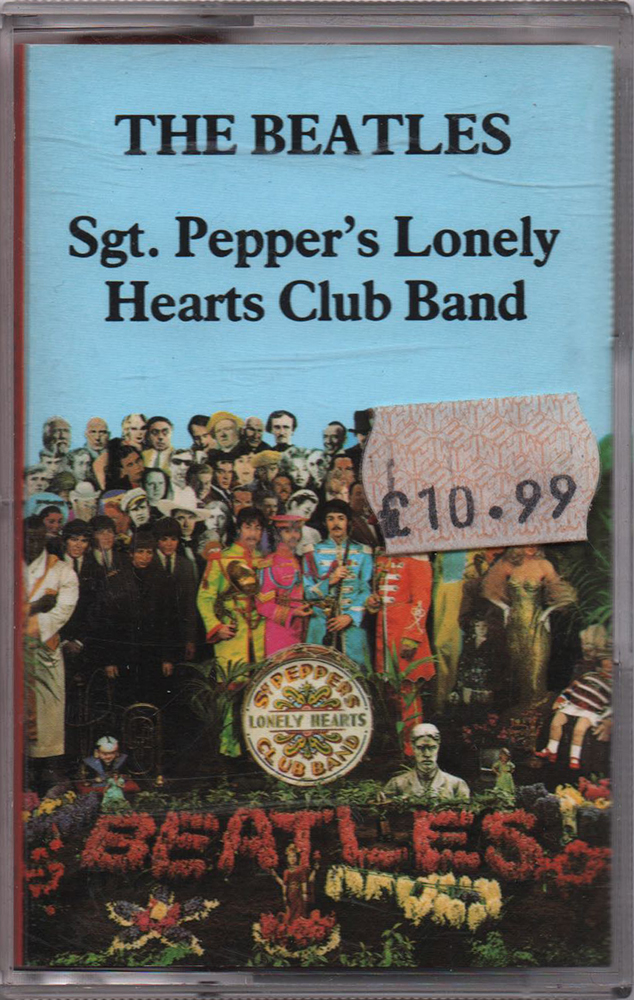 |
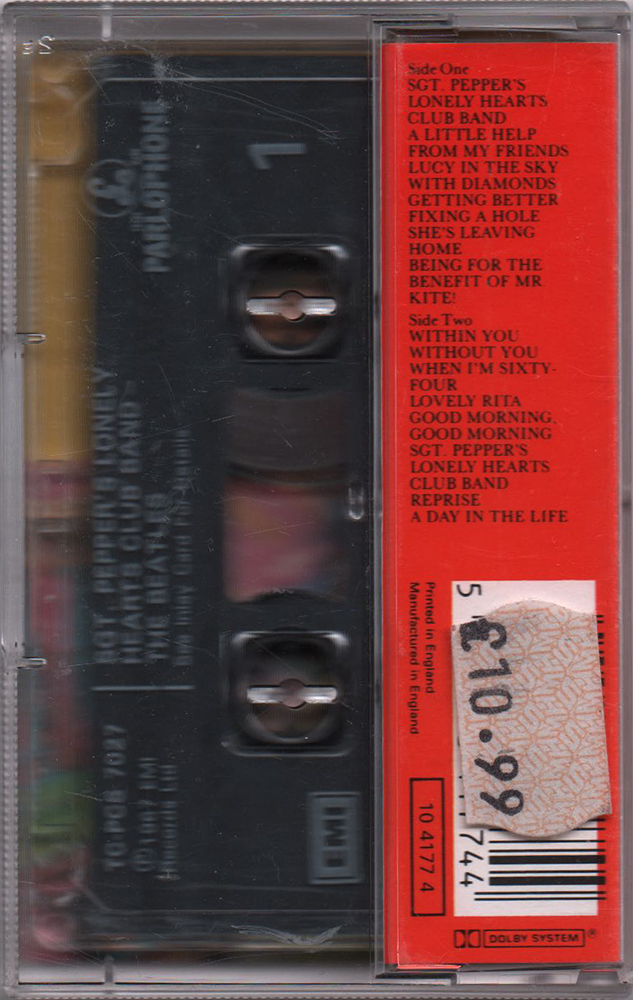 |
 |
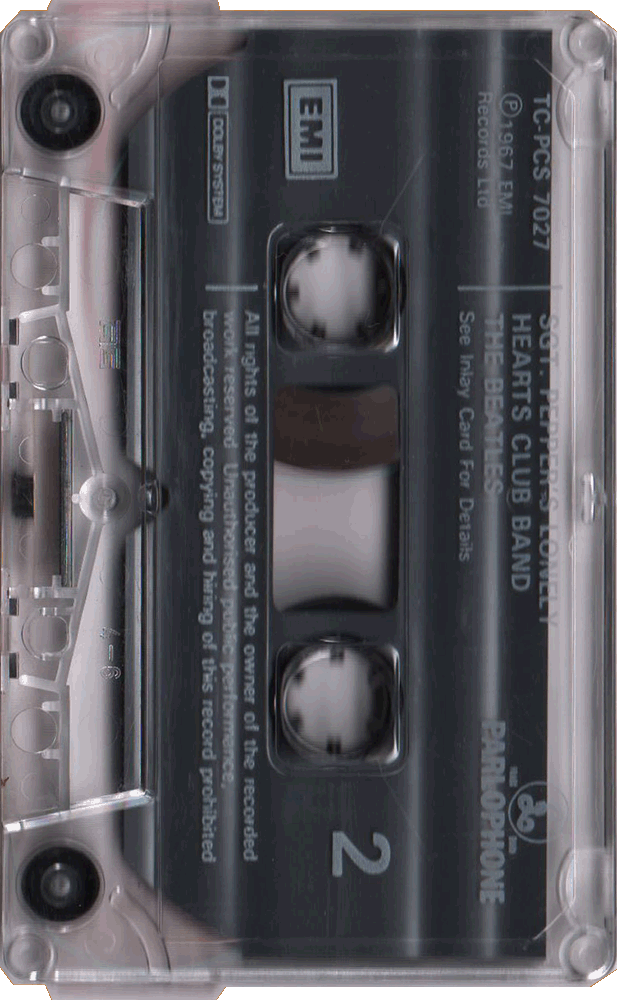 |
|
| The cassette cases ("Norelco" cases)
were clear plastic at the front and around the spine area,
and black plastic at the rear. |
Transparent Cassette shell with White on-body
print. Parlophone logo on transparent cassette. |
|||
| INLAY |
INLAY: FRONT |
|||
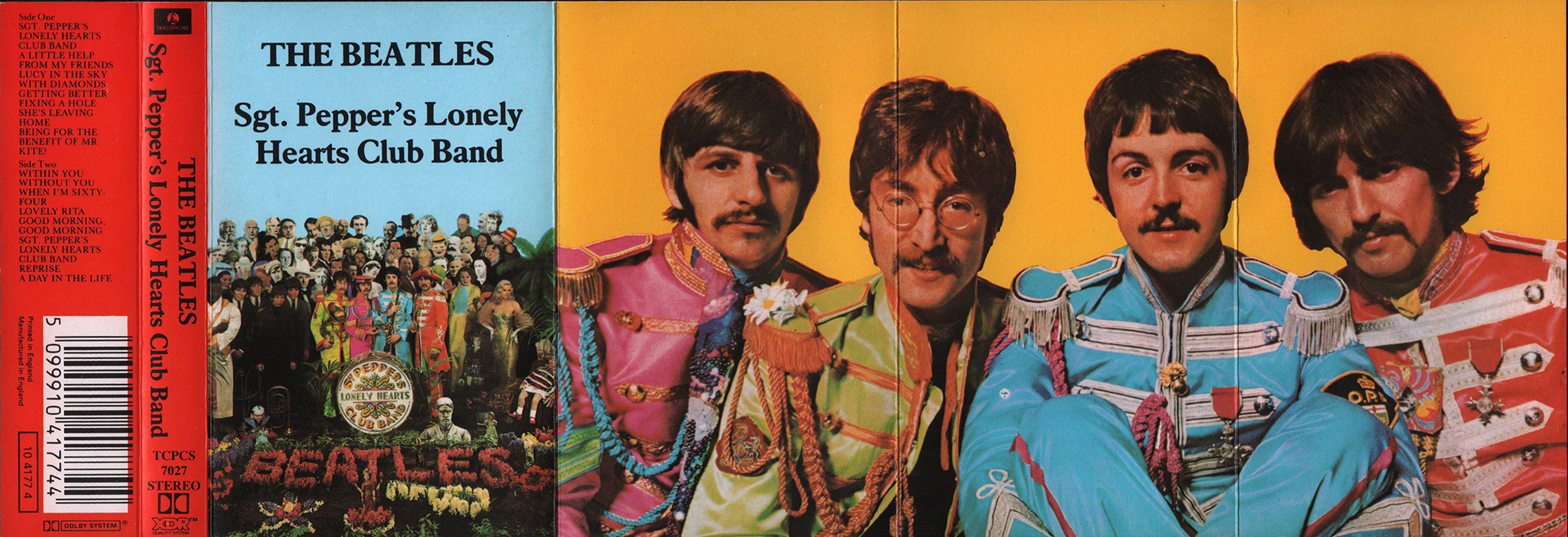 |
||||
| INLAY: INSIDE | ||||
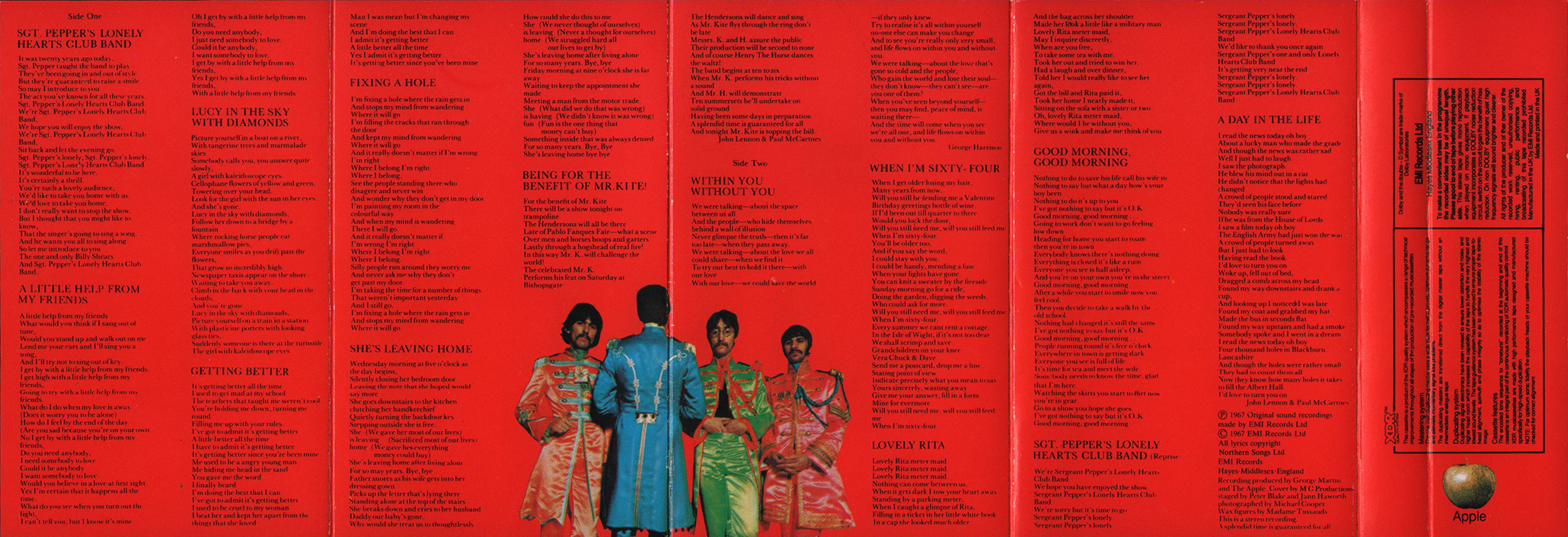 |
||||
| 4 panel inlay printed both
sides. Includes "XDR (*1)" quality feature with apple logo on wraparound. |
||||
| INLAY: FRONT CLOSE UP | ||||
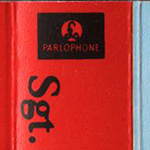 |
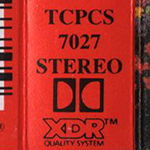 |
The Dolby and XDR logo marks are
printed on the spine.
|
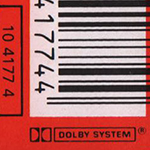 |
Dolby system logo was printed. |
| INLAY: FRONT CLOSE UP | ||||
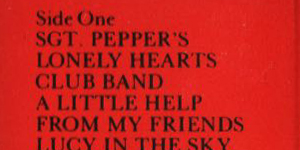 |
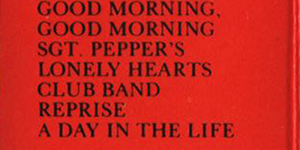 |
The cassette of the album "Sgt. Pepper's"
is recorded in the same order as the LP. The track title on the cassette inlay is mistakenly printed as "A little help from my friends" |
||
| INLAY: FRONT CLOSE UP | ||||
 |
The flap has a barcode and "Printed in England" credit. | |||
| INLAY: FRONT CLOSE UP | ||||
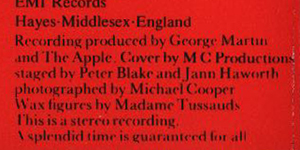 |
A producer, a designer, and a photographer are credited. | 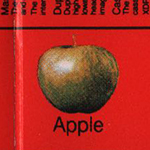 |
Apple logomark was added on the inlay. | |
| INLAY: INSIDE CLOSE UP | ||||
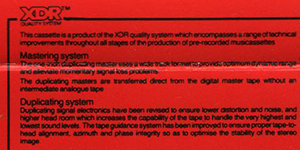 |
The liner notes on the inside of the inlay contain an explanation about XDR (expanded dynamic range). |  |
||
 |
||||
| LABEL CLOSE UP | ||||
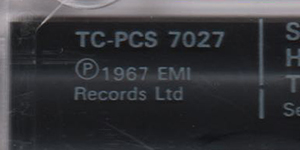 |
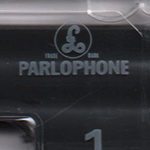 |
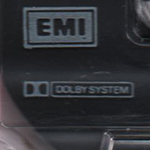 |
Parlophone logo, EMI
logo, and "Dolby System" logo was printed on the label. |
|
| LABEL CLOSE UP | ||||
| SIDE
1 |
SIDE 2 |
The
label states, "See Inlay Card For Details." The final "inner groove" fades out, but the repeat is audible at least twelve times. |
||
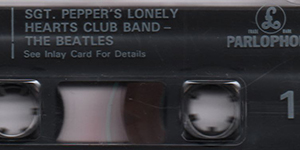 |
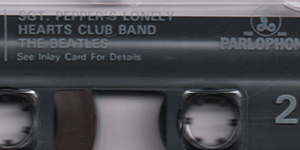 |
|||
| OTHER ITEM | ||||
| - |
||||
| LABEL | Transparent Cassette shell with White
on-body print |
|||
| MIX | STEREO |
|||
| RECORD COMPANY'S NAME | EMI Records Ltd. / Apple |
|||
| CENTRAL REMARK "SOLD IN U.K." |
- | |||
| RECORDING PUBLISHED CREDIT | (P) 1967 |
|||
| INLAY FORM | 4 panel inlay printed both sides. (with
Apple logo) |
|||
| SHELL | Transparent Cassette shell with
White on-body print |
|||
| CASSETTE CASE |
"Norelco"
cases:
clear plastic at the front and around the spine area, and
black plastic at the rear. |
|||
| PRINTER CREDIT | Made and Printed in the UK / Manufactured
in the UK by EMI Records Ltd. |
|||
| COVER DESIGN/ PHOTO/ NOTES | Cover by M C Productions and The Apple /
Staged by Peter Blake and Jann Haworth Photographed by
Michael Cooper / Wax figures by Madame Tussauds |
|||
| PRODUCER | Recording produced by George Martin | |||
| COMMENTS | 4 panel inlay printed both
sides. Transparent Cassette shell with White on-body print Includes "XDR (*1)" quality feature with apple logo on wraparound. Parlophone logo on transparent cassette. This was the first Beatles "XDR" re-issue on 1st June 1987, the rest of the regular Beatles albums were all re-issued on 19th November 1987. "Past Masters" was released the following year, the double cassette delayed until 24th October 1988. Original pressings of the XDR cassette albums did not include an Apple logo, these were added circa 1992/93. Track durations do not appear on this release On inlay: "Printed in England, Manufactured in England" Another similar UK Cassette release With The Beatles differs from this one in that the Cassette is the Clear/Foil type and there is NO Apple logo on the J-flap. The final "inner groove" fades out, but the repeat is audible at least twelve times. Issued as part of a box set similar to the LP & CD sets, too. The set was issued in a wooden bread box (type) with a 64 page glossy book. The wooden box could be ordered as a separate item with the booklet. The complete box set comprised of: Please Please Me, Parlophone TCPMC1202 - Mono With the Beatles, Parlophone TCPMC 1206 - Mono A Hard Day's Night, Parlophone TCPMC 1230 - Mono Beatles For Sale,- Parlophone TCPMC 1240 - Mono Help!, Parlophone TCPCS 3071 - Stereo Rubber Soul, Parlophone TCPCS 3075 - Stereo Revolver, Parlophone TCPCS 7009 - Stereo Sgt Pepper's Lonely Hearts Club Band, Parlophone TCPCS 7027 - Stereo The Beatles (White Album), Apple TCPCS 4501 - Stereo - Issued on two tapes Magical Mystery Tour, Parlophone TCPCs 3077 - Stereo Yellow Submarine, Apple TCPCS 7070 - Stereo Abbey Road, Apple TCPCS 7088 - Stereo Let it Be, Apple TCPCS 7096 - Stereo Past Masters Vol 1 & 2, Apple TCBPM1/2- Stereo - Issued on two tapes *1)XDR (expanded dynamic range), also known as SDR (super dynamic range) is a quality-control and duplication process for the mass-production of pre-recorded audio cassettes. It is a process designed to provide higher quality audio on pre-recorded cassettes by checking the sound quality at all stages of the tape duplication process. In this way, the dynamic range of audio recorded on an XDR-duplicated cassette can be up to 13 decibels greater. XDR (Expanded Dynamic Range) was originally developed by Capitol Records in LA in their R&D facility. As well as with EMI & Capitol Records, PolyGram and other labels also offered cassette releases duplicated with the XDR process. DOLBY B-type: A Dolby noise-reduction system, or Dolby NR, is one of a series of noise reduction systems developed by Dolby Laboratories for use in analog audio tape recording. The first was Dolby A, a professional broadband noise reduction system for recording studios in 1965, but the best-known is Dolby B (introduced in 1968) for the consumer market, which helped make high fidelity practical on cassette tapes, which used a relatively noisy tape size and speed. From the mid-1970s, Dolby B became standard on commercially pre-recorded music cassettes. |
|||